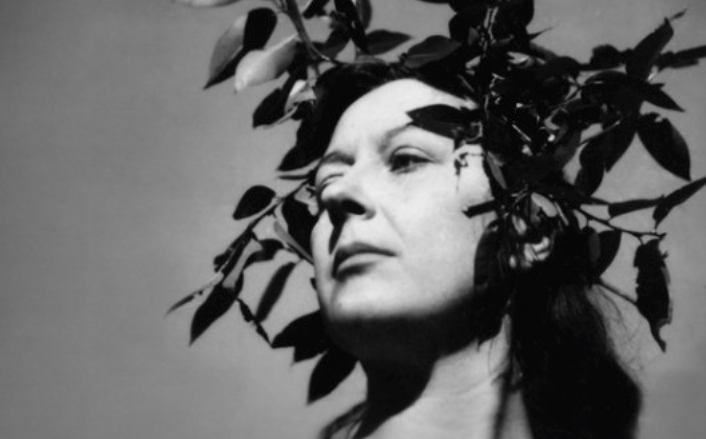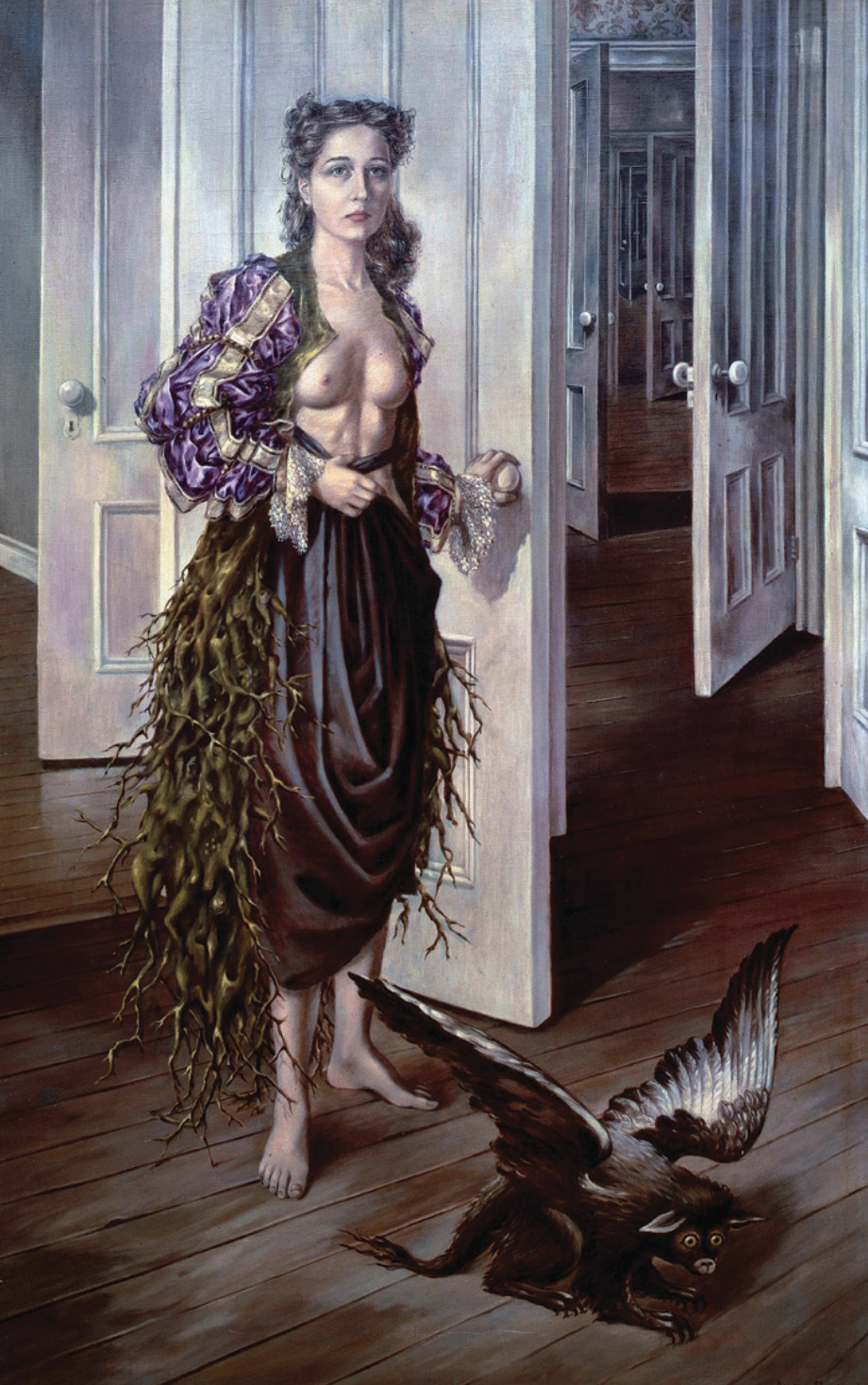DOROTHEA TANNING

Dorothea Tanning, 1945 (Image by Robert Motherwell )
“Art has always been the raft onto which we climb to save our sanity.”
Dorothea Tanning was an American artist who is often conveniently pigeon-holed as a “woman Surrealist.” However, her rich and varied body of work created over six decades refutes that oversimplification and cements her unique and important contribution to 20th-century art despite the label.
Tanning was born in 1910 and spent her childhood in Galesburg, Illinois. As a child , she developed a passionate love of art, alongside a keen interest in literature, reading the likes of Lewis Carroll and Hans Christian Anderson.
After graduating from high school, she worked in the Galesburg Public Library and attended Knox College. After two years at Knox, she quit to pursue her love of art, moving first to Chicago in 1930 and briefly attending the Chicago Academy of Fine Art.
After three weeks, she left the course due to disagreements about their teaching approach but continued working and painting. She moved to New York City in 1935, where she worked as a commercial illustrator to support her continuing ambition to become a professional artist.
Tanning spent several years in Europe leading up to World War II, returning to New York in 1940 as part of the huge influx of refugees fleeing Nazi Europe. Amongst them can many influential artists, including notable Surrealists André Masson, Yves Tanguy, Salvador Dalí, and Max Ernst, whom she was to marry in 1946.
“World War II sent the Surrealists over here, at a time when American art and American culture were in the doldrums, and it was like a shot in the arm. They absolutely amazed everyone, and their influence has been long-lasting—like a stain, like an inoculation.”
Caught up in this sudden shift in the city’s artistic landscape, her break came in 1941 when the Julien Levy Gallery picked her up. Impressed by illustration work she had created for Macy’s department store, the gallery gave Tanning two solo exhibitions—in 1944 and 1948—placing her at the heart of the new scene and into the center of the circle of émigré Surrealists, now making their presence felt.
The surreal imagery and dream-like themes of her paintings in the 1940s and her close connections with the Surrealist movement have led many to regard Tanning as only a Surrealist painter. Others more cynically suggested her success as a woman was a novelty, driven by her associations.
But for Tanning, the Surrealist style of working was only one small stylistic step along an artistic road that would take her in many different directions over the decades.

“Anything that is ordinary and frequent is uninteresting to me, so I have to go in a solitary and risky direction.”
Although as a woman artist in the mid 20th century , she was very much in the minority in an industry dominated by men, she never let that be an issue and was openly combative around gender issues throughout her life. Moreover, since she was married to a famous and successful artist, she aggressively countered anyone suggesting she was using him to further her own career.
Tanning was an active role model for younger women trying to become independent artists and repeatedly spoke to the forces that compelled her to take up an artist’s career. She argued that the energy that sustained her work had everything to do with being human and nothing to do with being a woman.
“Women artists. There is no such thing – or person. It’s just as much a contradiction in terms as ‘man artist’ or ‘elephant artist.'”
Tanning first met Ernst in 1942. He went to her studio to consider her work for inclusion in Exhibition by 31 Women , staged in 1943 at the Art of This Century Gallery. The gallery was owned by Peggy Guggenheim, Ernst’s wife at the time, and Ernst was curating work for inclusion.
In 1949 Tanning and Ernst relocated to France throughout the 1950s. And here , her work shifted, away from the dream-like figurative landscapes towards an increasingly abstract style. “My canvases literally splintered…I broke the mirror, as you might say.” By the late 1960s, Tanning’s paintings were almost entirely abstract in style, though often subtly suggested the female form that had been so explicit in her past work.
Tanning returned to New York in 1980, a few years after Ernst’s death, spending the remainder of her life between Los Angeles, New York, and France. Her last paintings were a series of flowers completed in 1998. After leaving painting, she continued to write, focusing mainly on poetry until she died at home in New York in 2012, aged 101.
“Keep your eye on your inner world and keep away from ads, idiots, and movie stars.”
HIGHLIGHT
Six Thursdays, beginning November 4
from 5:30–7:30pm

Wheel Thrown Pottery
With Amy Bourbon
Ever wondered how your favorite pottery mug was made? we will focus on the potter’s wheel, a tool that has been used around the world for thousands of years.
You will learn each step of making a pot, from preparing the clay to the final glaze firing. And explore the process of creating basic forms like cylinders, bowls, and vessels. Bring curiosity, patience, and a good sense of humor!
$170 – Member, $200 – Non-Member
